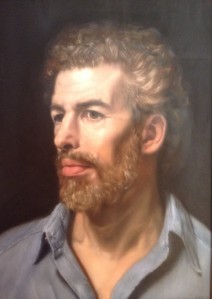In-Sight Publishing
Born to do Math 24 - LSD, SAT, & Stupid Ideas
Born to do Math 24 - LSD, SAT, & Stupid Ideas
Scott Douglas Jacobsen & Rick Rosner
March 31, 2017
[Beginning of recorded material]
Scott Douglas Jacobsen: Did you go into the implications of the equivalence between what happens in heads and the universe at large? [Laughing]
Scott Douglas Jacobsen: Did you go into the implications of the equivalence between what happens in heads and the universe at large? [Laughing]
Rick Rosner: I thought. That’s a good stupid idea. I will
actually take the SAT on LSD because it is a stupid damn thing to do. I was
just starting my career as being a specialist at doing stupid shit. That was
one time that I took LSD.
SDJ: LSD messes with your head, your brain, with
the information processing in it. So the “red” doesn’t necessarily mean red by
standard experience.
RR: It does,
but LSD doesn’t mess with—it doesn’t entirely mess with your associative
structure. It just makes it crappy. There’s a lot of information processing
that goes into translating what you see when you see somebody’s face. Your face
has a bunch of subtle curves. Every facial feature has its own curves. You’re
trying to translate emotions and what somebody’s emotional state is.
At some point, you’re add
the auditory information by watching their lips. It is easier to understand
what somebody is saying if you watch somebody talking at you. To some extent,
you’re adding to the auditory information by watching their lips. It is easier
to understand what somebody is saying if you’re watching them talk rather than
just listening to them because you’re getting a lot of additional information.
On LSD, all of these
little processors, little specialist subsystems in your brain, have their
functioning knocked down by something in your brain, so you don’t get gentle
curves when you look at somebody’s face. You get their face broken up into
stupid polygons because that’s the best your brain can do at that point. You’re
not getting smooth skin effects of light, shading, and glow of blood
circulating beneath the skin and people can look like lizards.
They can be talking to
you, but it is garbled mush. You know they’re saying words, but it is echoed,
choppy – and so on.
[Attempted impersonation
by Rick Rosner of LSD auditory alterations.]
SDJ: [Laughing]
RR: It’s
been a long time.
[End of recorded material]
Authors[1]

Rick Rosner
American Television Writer
RickRosner@Hotmail.Com
Rick Rosner

Scott Douglas Jacobsen
Editor-in-Chief, In-Sight Publishing
Scott.D.Jacobsen@Gmail.Com
In-Sight Publishing
Endnotes
[1] Four format points for the session article:- Bold text following “Scott Douglas Jacobsen:” or “Jacobsen:” is Scott Douglas Jacobsen & non-bold text following “Rick Rosner:” or “Rosner:” is Rick Rosner.
- Session article conducted, transcribed, edited, formatted, and published by Scott.
- Footnotes & in-text citations in the interview & references after the interview.
- This session article has been edited for clarity and readability.
- American Psychological Association. (2010). Citation Guide: APA. Retrieved from http://www.lib.sfu.ca/system/files/28281/APA6CitationGuideSFUv3.pdf.
- Humble, A. (n.d.). Guide to Transcribing. Retrieved from http://www.msvu.ca/site/media/msvu/Transcription%20Guide.pdf.
License
In-Sight Publishing and In-Sight: Independent Interview-Based Journal by Scott Douglas Jacobsen is licensed under a Creative Commons Attribution-NonCommercial-NoDerivatives 4.0 International License.
Based on a work at www.in-sightjournal.com and www.rickrosner.org.
Copyright
© Scott Douglas Jacobsen, Rick Rosner, and In-Sight Publishing and In-Sight: Independent Interview-Based Journal 2012-2017. Unauthorized use and/or duplication of this material without express and written permission from this site’s author and/or owner is strictly prohibited. Excerpts and links may be used, provided that full and clear credit is given to Scott Douglas Jacobsen, Rick Rosner, and In-Sight Publishing and In-Sight: Independent Interview-Based Journal with appropriate and specific direction to the original content.